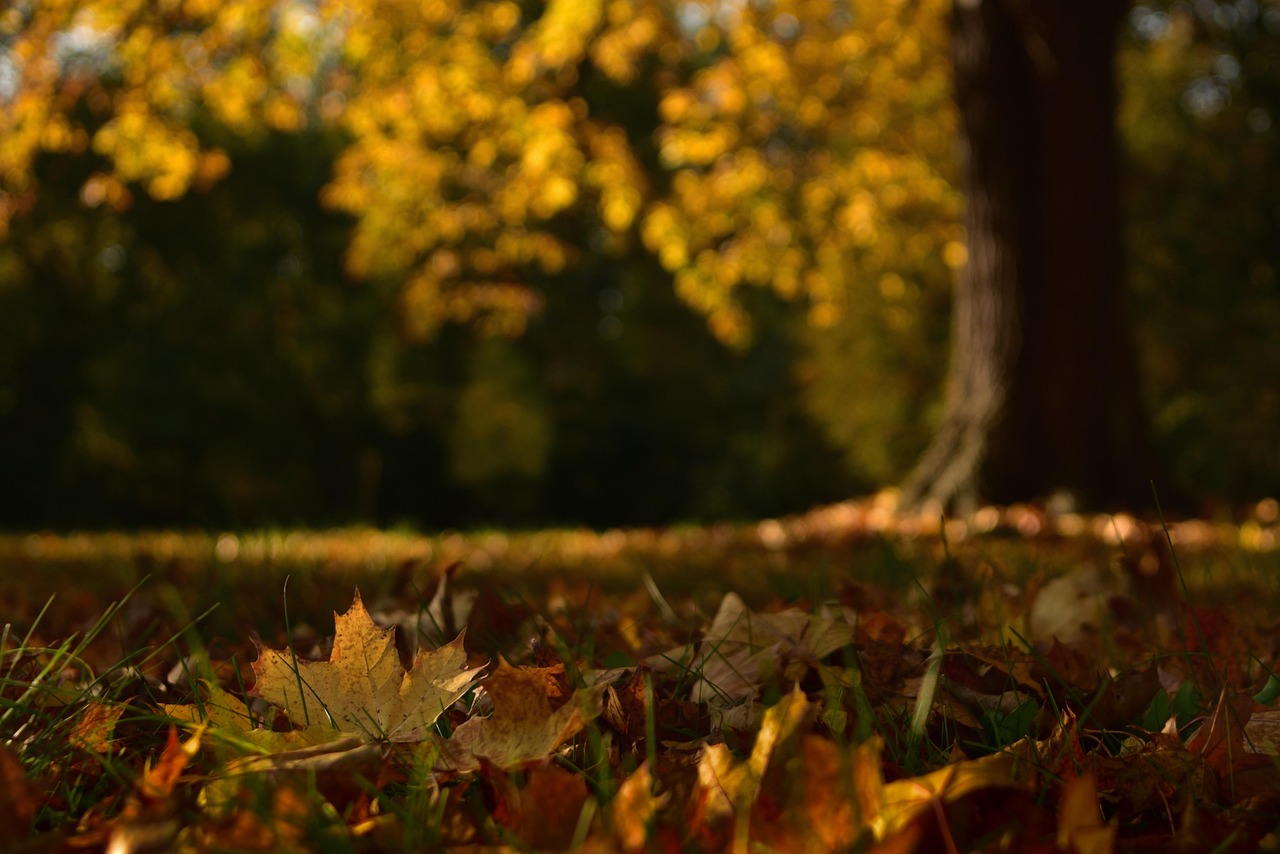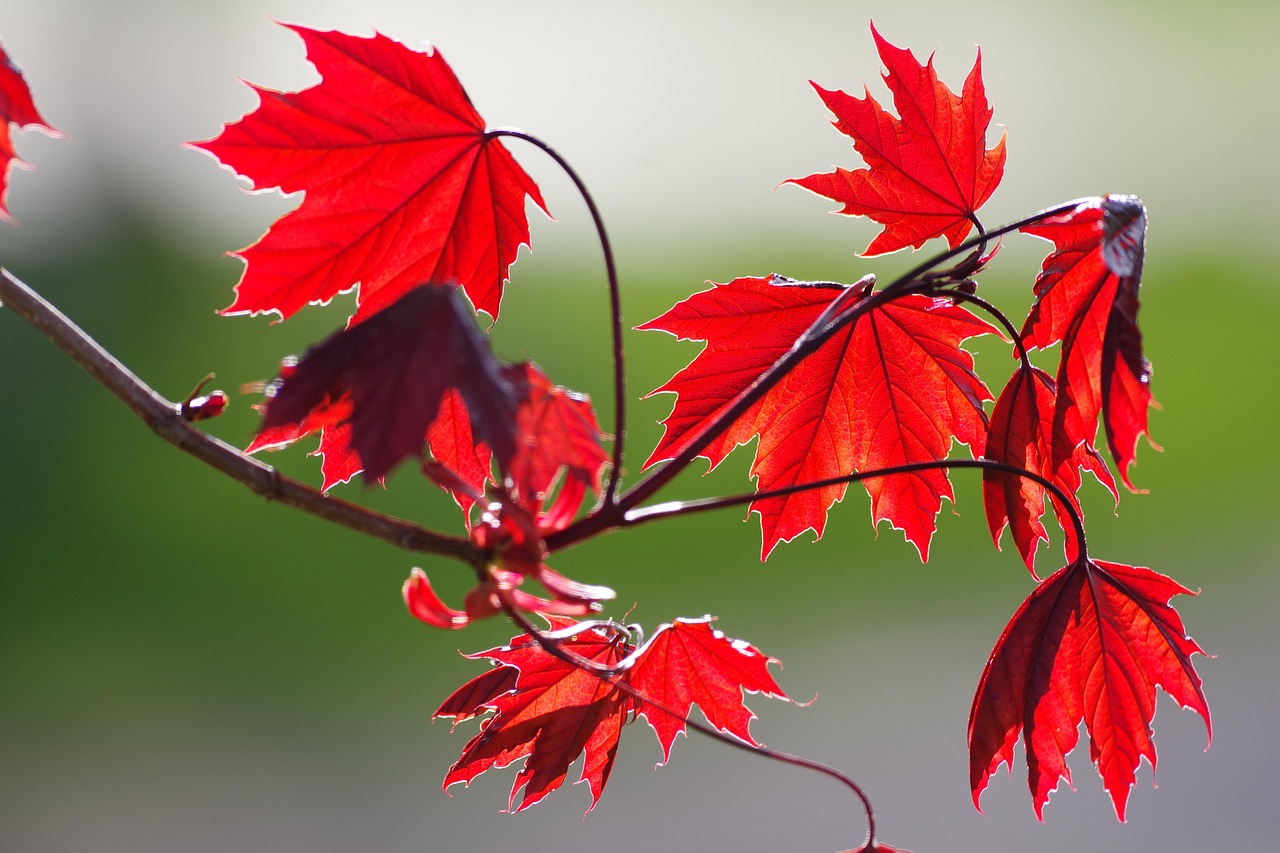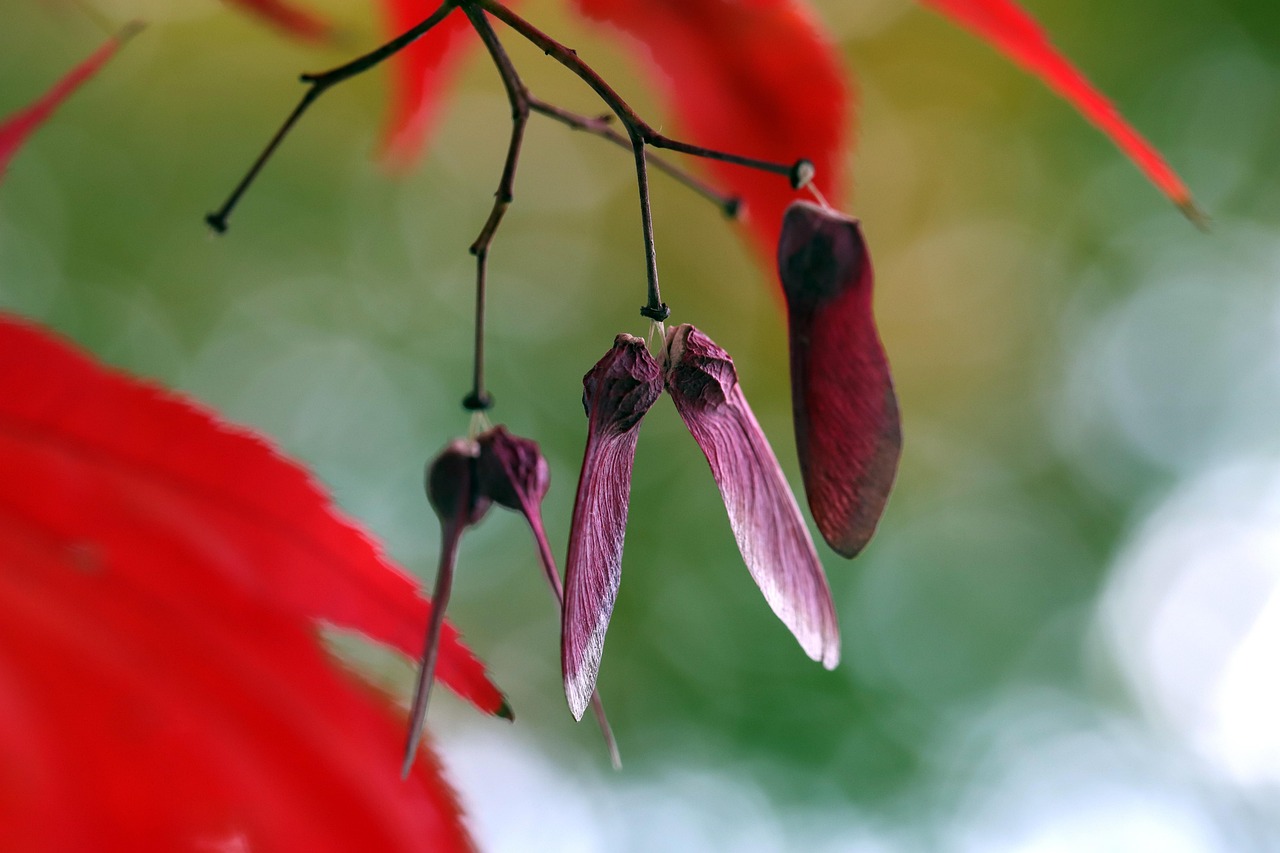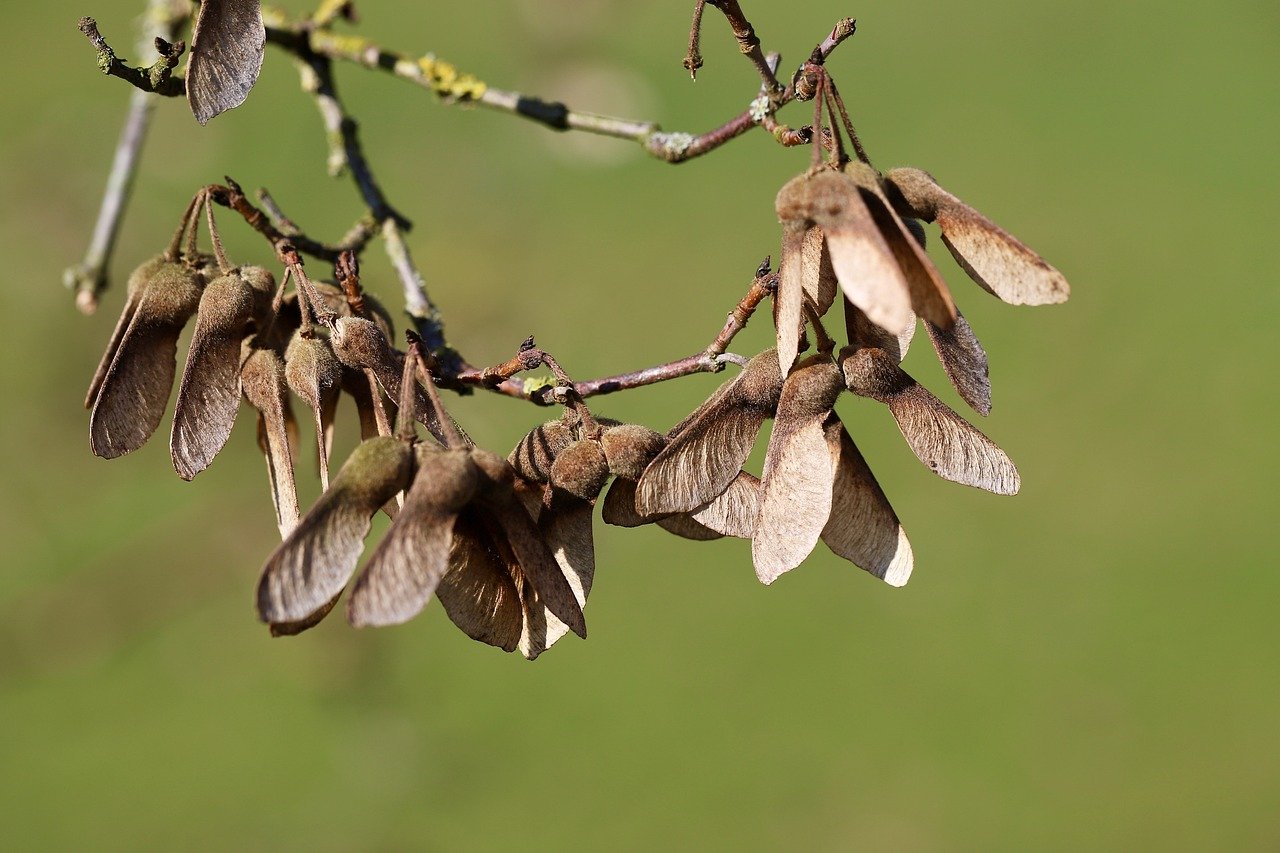The Red Maple (Acer rubrum) is indeed a deciduous tree, meaning it sheds its leaves annually. This seasonal leaf behavior is a vital adaptation that allows the tree to conserve water and energy during the colder months.
Understanding Deciduous Trees

Deciduous trees are characterized by their ability to lose their leaves each autumn. This process is a natural response to the changing seasons. During the colder months, many trees, including the Red Maple, enter a state of dormancy. This dormancy helps them survive winter conditions when water is less available.
In contrast to evergreen trees, which retain their foliage year-round, deciduous trees like the Red Maple undergo a dramatic transformation. As the temperatures drop and daylight decreases, these trees prepare for winter by shedding their leaves. This process not only conserves resources but also reduces the risk of damage from heavy snow accumulation.
The Seasonal Cycle of Red Maple
The seasonal behavior of the Red Maple can be divided into four key phases: leaf growth in spring, full foliage in summer, color change in autumn, and leaf drop in winter. Understanding this cycle helps appreciate the beauty and resilience of this species.
Spring: New Growth
In early spring, as temperatures begin to rise, the Red Maple starts to produce new leaves. This phase is marked by the emergence of bright green foliage. The tree utilizes sunlight and water to photosynthesize, producing energy that supports growth and development.
Summer: Full Foliage
During the summer months, the Red Maple reaches its full leaf coverage. The dense canopy provides shade and habitat for various wildlife. The leaves remain vibrant green due to chlorophyll, which plays a crucial role in photosynthesis. This phase is essential for the tree’s overall health and growth.
Autumn: Color Change
As autumn approaches, the days become shorter, and temperatures begin to drop. The chlorophyll in the leaves breaks down, revealing other pigments such as carotenoids and anthocyanins. This process results in stunning displays of red, yellow, and orange hues on the leaves of the Red Maple. The vibrant fall colors attract many admirers and signify the impending transition to winter.
Winter: Leaf Drop
In late autumn, as temperatures continue to decline, Red Maples prepare for winter by shedding their leaves. This phenomenon occurs when trees sense changes in environmental conditions. The process is facilitated by a layer of cells that forms at the base of each leaf stem, blocking nutrient flow and eventually causing the leaf to detach.
This leaf drop is crucial for survival. By losing their leaves, Red Maples reduce water loss through transpiration and minimize the risk of frost damage. The tree enters a dormant state during winter, conserving energy until spring returns.
Key Characteristics of Red Maple Leaves
| Characteristic | Description |
|---|---|
| Shape | Typically lobed with a serrated edge |
| Size | Ranges from 2 to 6 inches long |
| Color | Bright green in summer; vibrant red or yellow in autumn |
| Fall Color Change | Notable for its vivid red shades |
The characteristics of Red Maple leaves make them not only beautiful but also functional for the tree’s health and adaptation strategies. Their ability to change color and eventually drop allows the tree to coexist with varying environmental conditions throughout the year.
The Importance of Seasonal Leaf Behavior
The seasonal leaf behavior of Red Maples plays a significant role in their ecosystem. By shedding leaves, these trees contribute organic matter to the soil. The fallen leaves decompose and enrich the ground, supporting other plant life. This cycle fosters a healthy environment for various organisms.
Additionally, Red Maples provide essential habitats for wildlife throughout their seasonal changes. Birds and insects rely on these trees for food and shelter during different times of the year. Understanding this relationship highlights the importance of preserving deciduous trees and their habitats.
Environmental Factors Affecting Leaf Behavior
The seasonal leaf behavior of Red Maples is influenced by various environmental factors. These factors determine how and when the tree will shed its leaves. Understanding these influences can provide insights into the health of the tree and its adaptability to changing climates.
Temperature Changes
Temperature plays a crucial role in the timing of leaf drop. As temperatures decrease in autumn, Red Maples begin the process of senescence, which is the aging of leaves. This process is triggered by a combination of factors, including:
- Day Length: As daylight hours shorten, trees receive signals that winter is approaching.
- Cold Nights: Lower nighttime temperatures prompt trees to start preparing for dormancy.
- Frost Events: Early frosts can accelerate leaf drop as they damage the leaf tissue.
Moisture Availability
The availability of moisture is another critical factor affecting the seasonal behavior of Red Maple leaves. During periods of drought, trees may shed their leaves earlier than usual. This helps conserve water and energy. Key points regarding moisture include:
- Soil Moisture: Adequate soil moisture supports healthy leaf development in spring and summer.
- Drought Conditions: Prolonged dry spells can lead to premature leaf drop to minimize water loss.
- Water Stress: Trees experiencing stress due to insufficient water may exhibit stunted growth and earlier foliage loss.
Soil Quality and Nutrients
The quality of soil and nutrient availability also impacts the health and seasonal behavior of Red Maples. Healthy soil promotes robust growth and vibrant foliage. Some important aspects include:
- Nutrient-Rich Soil: Soil rich in organic matter supports strong leaf development and color change in autumn.
- Poor Soil Conditions: Compacted or nutrient-deficient soil may lead to weaker trees, affecting their ability to maintain healthy foliage.
- pH Levels: The acidity or alkalinity of the soil can influence nutrient uptake and overall tree health.
Impact of Climate Change on Leaf Behavior
Climate change poses significant challenges to the seasonal leaf behavior of Red Maples and other deciduous trees. Changes in temperature, precipitation patterns, and extreme weather events can disrupt the natural cycles that govern leaf growth and shedding.
Altered Growing Seasons
As temperatures rise, the timing of seasonal changes may shift. This can have multiple consequences for Red Maples:
- Early Bud Break: Warmer winters may cause trees to bud earlier in spring, which could make them more vulnerable to late frosts.
- Extended Growing Seasons: Longer growing seasons could lead to increased photosynthesis but may also stress trees due to higher temperatures.
- Mismatched Phenology: Changes in flowering and leafing times can disrupt interactions with pollinators and wildlife that depend on these cycles.
Pest and Disease Pressure
The effects of climate change may also increase pest populations and disease prevalence. Warmer temperatures can create favorable conditions for pests that affect Red Maples:
- Increased Pest Activity: Pests such as aphids or borers may thrive in warmer climates, damaging leaves and weakening the tree.
- Disease Spread: Higher humidity levels can promote fungal diseases that affect leaf health.
- Stress Response: Trees under pest pressure may shed leaves prematurely as a defense mechanism.
Cultural Significance of Red Maple Leaves
The Red Maple is not only significant ecologically but also culturally. Its vibrant leaves have inspired art, celebrations, and symbolism across various cultures. Understanding this cultural significance enriches our appreciation for this beautiful tree.
Symbolism in Different Cultures
The striking colors of Red Maple leaves have made them symbols of beauty, change, and resilience. In various cultures, these leaves represent different meanings:
- Change: The transformation of leaves from green to red reflects life’s cycles and transitions.
- Strength: The ability of Red Maples to thrive in diverse environments symbolizes resilience.
- Cultural Identity: In North America, the Red Maple is celebrated as a national symbol, representing unity and nature’s beauty.
Culinary Uses
The sap of the Red Maple can also be harvested to produce syrup, similar to its more famous cousin, the Sugar Maple. This syrup is a popular ingredient in various culinary traditions. Key points include:
- Sap Collection: The sap is collected during late winter or early spring when temperatures fluctuate above and below freezing.
- Syrup Production: The sap is boiled down to create a sweet syrup used in cooking and as a topping for pancakes and waffles.
- Cultural Traditions: Maple sugaring has deep roots in many cultures, often celebrated with festivals marking the arrival of spring.
The seasonal behaviors of the Red Maple not only enhance its ecological role but also enrich human experiences through culture, cuisine, and art. By appreciating these connections, we gain a deeper respect for this remarkable tree.

2>Red Maple in Urban Environments
The Red Maple is a popular choice for landscaping and urban tree plantings. Its adaptability to different conditions makes it a favored species for parks, streets, and residential areas. Understanding its role in urban environments highlights the benefits and challenges associated with this tree.
Benefits of Red Maple in Urban Areas
Red Maples offer numerous advantages when planted in urban settings. Some of the key benefits include:
- Shade Provision: The broad canopy of Red Maples provides essential shade, reducing heat in urban areas and lowering energy costs for cooling buildings.
- Aesthetic Appeal: With their vibrant autumn foliage, Red Maples enhance the beauty of city landscapes, attracting visitors and improving overall quality of life.
- Wildlife Habitat: These trees support various wildlife, including birds and insects, even in urban settings, promoting biodiversity.
- Air Quality Improvement: By absorbing carbon dioxide and releasing oxygen, Red Maples contribute to cleaner air in urban environments.
Challenges of Growing Red Maple in Cities
While there are many benefits, growing Red Maples in urban areas also presents challenges. Some of these include:
- Soil Compaction: Urban soils are often compacted, making it difficult for tree roots to grow. This can hinder the overall health of the tree.
- Pavement Issues: The roots of Red Maples can lift sidewalks and roads, leading to maintenance problems for city infrastructure.
- Pollution Sensitivity: Red Maples can be sensitive to air pollution, which may affect their growth and health over time.
- Water Stress: Urban trees may face inconsistent watering due to impervious surfaces that limit water infiltration into the soil.
Planting and Care of Red Maples

>Proper planting and care are essential for ensuring the health and longevity of Red Maple trees. Following best practices helps maximize their benefits in both urban and rural settings.
Optimal Planting Conditions
When planting a Red Maple, consider the following conditions for optimal growth:
- Soil Type: Red Maples thrive in well-drained, moist soils but can tolerate a range of soil types, including clay and sandy soils.
- Sunlight: These trees prefer full sun to partial shade. Ideally, they should receive at least six hours of direct sunlight each day.
- Space Requirements: Ensure adequate space for growth. Red Maples can reach heights of 40 to 60 feet and spread 30 to 50 feet wide.
Watering and Fertilization
Watering and fertilization are critical components of tree care. Here are some guidelines:
- Watering: Newly planted Red Maples require regular watering to establish roots. Water deeply once or twice a week, adjusting based on rainfall.
- Fertilization: Apply a balanced fertilizer in early spring to promote healthy growth. Avoid over-fertilization, which can harm the tree.
Pest Management
Pests can pose threats to the health of Red Maples. Regular monitoring helps manage potential issues effectively. Common pests include:
- Aphids: These small insects can sap nutrients from leaves. They can be managed through natural predators or insecticidal soaps.
- Maple Borers: These beetles can damage the trunk and branches. Use appropriate insecticides if infestations occur.
- Scale Insects: Scale insects attach themselves to branches and leaves, sucking sap. Regular inspection and treatment can help control populations.
The Role of Red Maple in Climate Resilience
The adaptability of the Red Maple contributes to its role in climate resilience. As climate patterns shift, this species can help mitigate some effects of climate change.
Carbon Sequestration
Red Maples play an essential role in carbon sequestration, which helps combat global warming. They absorb carbon dioxide during photosynthesis and store carbon in their biomass.
- Growth Rate: Fast-growing species like Red Maple are particularly effective at sequestering carbon over their lifespan.
- Long-Term Storage: As these trees mature, they continue to sequester more carbon, contributing to climate mitigation efforts.
Erosion Control
The extensive root system of Red Maples helps stabilize soil and prevent erosion. This is particularly important in areas susceptible to heavy rainfall or flooding.
- Root Structure: Deep roots anchor the tree and hold soil together, reducing runoff and soil loss.
- Biodiversity Support: By stabilizing ecosystems, Red Maples support various plant and animal species that rely on healthy soil systems.
Cultural Events Celebrating Red Maples
The beauty and significance of Red Maples are celebrated through various cultural events and festivals. These occasions often highlight the tree’s importance within local communities.
Maple Festivals
Many regions host maple festivals that celebrate the arrival of spring and the tradition of maple syrup production. Key elements of these festivals include:
- Syrup Tasting: Attendees can sample different grades of maple syrup produced from local trees.
- Cultural Activities: Festivals often feature crafts, music, and local food that reflect the cultural heritage surrounding maple syrup production.
- Educational Programs: Many events include workshops on tree care, syrup production, and other related topics.
Art Exhibitions
The stunning colors of Red Maple leaves inspire artists across various mediums. Art exhibitions featuring works focused on this tree celebrate its beauty and significance in nature.
- Painters and Photographers: Many artists capture the vibrant fall colors of Red Maples in their work.
- Sculpture and Installations: Some artists create installations that reflect the themes of nature conservation and climate change through the lens of Red Maples.
The appreciation for Red Maples extends beyond their ecological importance; it encompasses cultural practices and artistic expressions that enrich our connection with nature.
The Role of Red Maple in Ecosystems

>The Red Maple plays a vital role in various ecosystems due to its adaptability and resilience. Its presence contributes significantly to the overall health of the environment and supports countless species of flora and fauna.
Habitat for Wildlife
Red Maples provide essential habitats for numerous wildlife species. The tree offers food, shelter, and breeding grounds. Some key points about the wildlife associated with Red Maples include:
- Birds: Many bird species rely on Red Maples for nesting and feeding. The seeds and buds are a food source for birds during spring.
- Insects: The flowers attract pollinators such as bees and butterflies, which play critical roles in the ecosystem.
- Mammals: Squirrels and deer often consume the bark and leaves of Red Maples, contributing to nutrient cycling within their habitats.
Soil Enrichment
As Red Maples shed their leaves annually, they contribute organic matter to the forest floor. This process is vital for soil health:
- Nutrient Cycling: Decomposing leaves provide nutrients that enhance soil fertility, promoting the growth of other plants.
- Microbial Activity: The fallen leaves support diverse microbial life, which aids in nutrient breakdown and enhances soil structure.
Red Maple Varieties and Their Differences
While the common Red Maple (Acer rubrum) is widely recognized, there are several cultivars and varieties that exhibit different characteristics. Understanding these can help in selecting the right type for specific landscaping needs.
Cultivars of Red Maple
Here are some popular cultivars of Red Maple:
- Acer rubrum ‘October Glory’: Known for its exceptional fall color, this variety has a broad crown and develops a rich red hue.
- Acer rubrum ‘Red Sunset’: This cultivar has a fast growth rate and provides brilliant fall foliage, making it a favorite for landscaping.
- Acer rubrum ‘Brandywine’: This selection is notable for its deep red autumn leaves and strong branch structure, ideal for urban settings.
Diversity in Leaf Shape and Color
The leaf shape and color can vary among different cultivars. Some may have broader leaves or exhibit unique color patterns. This diversity allows gardeners to choose varieties that best suit their aesthetic preferences.
Conservation Efforts and Future Outlook
As climate change continues to impact ecosystems, conservation efforts for Red Maples are becoming increasingly important. Organizations are working to ensure that these trees thrive in their natural habitats. Some strategies include:
- Restoration Projects: Efforts are underway to restore native habitats that support healthy populations of Red Maples.
- Education Programs: Public education about the importance of Red Maples can promote conservation efforts and responsible tree care.
- Research Initiatives: Ongoing research into the effects of climate change on Red Maple growth patterns helps inform conservation strategies.
Final Thoughts
The Red Maple is more than just a beautiful tree; it is a cornerstone of many ecosystems. Its deciduous nature and seasonal leaf behavior not only contribute to its ecological importance but also enrich the cultural fabric of communities. The vibrant colors of its leaves signal seasonal changes, reminding us of nature’s cycles.
As we face environmental challenges, understanding and appreciating the Red Maple’s role becomes essential. From providing habitat for wildlife to enhancing urban landscapes, this tree serves as a reminder of our connection to nature. By promoting conservation efforts and planting Red Maples in suitable environments, we can ensure that future generations will continue to enjoy their beauty and benefits.
The ongoing relationship between humans and Red Maples highlights the need for sustainable practices that honor nature while benefiting society. Together, we can work towards preserving these majestic trees for years to come.
